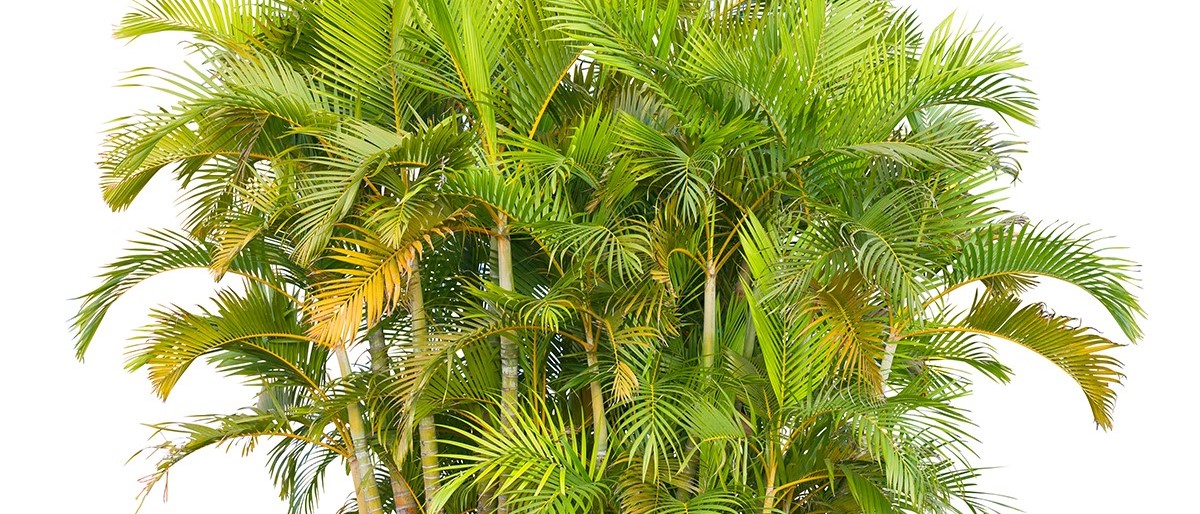
If you’re looking to add a touch of tropical elegance to your indoor space, look no further than the Butterfly Palm. Also known as the Areca Palm or Dypsis lutescens, this stunning plant is a popular choice among plant enthusiasts for its striking appearance and low maintenance needs. With its feathery fronds and graceful arching stems, the Butterfly Palm can instantly transform any room into a vibrant oasis.
But besides its beauty, there’s much more to this plant than meets the eye. In this article, we will delve into 14 astounding facts about the Butterfly Palm, shedding light on its origins, care requirements, and even its beneficial effects on the environment and well-being. So, if you’re curious to learn more about this captivating houseplant, buckle up and get ready to be amazed by the wonders of the Butterfly Palm!
Key Takeaways:
- The Butterfly Palm, also known as the Areca Palm, is a low-maintenance, air-purifying plant that adds elegance and tropical vibes to indoor and outdoor spaces. It’s non-toxic to pets and symbolizes peace and tranquility.
- With its graceful fronds and adaptability to indoor environments, the Butterfly Palm is a versatile plant that can thrive in bright, indirect light. It’s a popular choice for both interior decoration and landscaping projects.
The Butterfly Palm belongs to the family Arecaceae.
The Butterfly Palm, scientifically known as Dypsis lutescens, is a popular palm tree species that falls under the family Arecaceae. This tropical tree is native to Madagascar and is commonly found in various parts of the world due to its aesthetic appeal and versatility.
It is also known as the Areca Palm or Yellow Palm.
The Butterfly Palm is also referred to as the Areca Palm or Yellow Palm due to its vibrant yellow-colored stems and fronds. This distinctive feature sets it apart from other palm tree species and makes it a sought-after choice for landscaping and indoor decoration.
The Butterfly Palm is a low-maintenance plant.
One of the remarkable aspects of the Butterfly Palm is its low-maintenance nature. It is a resilient plant that can thrive in various environments, including both indoor and outdoor settings. It requires moderate watering and can tolerate light shade, making it an ideal choice for those with minimal gardening experience.
It features elegant, arching fronds.
The Butterfly Palm is known for its gracefully arching fronds that resemble butterfly wings, hence the name. These lush, green fronds add a touch of elegance and tropical vibes to any space, making it a popular choice for interior decorators and landscape designers alike.
The Butterfly Palm plays a vital role in air purification.
Aside from its aesthetic appeal, the Butterfly Palm is valued for its air-purifying qualities. It can effectively remove harmful toxins such as formaldehyde, benzene, and carbon monoxide from the surrounding air, promoting a healthier and cleaner indoor environment.
It thrives in bright, indirect light.
The Butterfly Palm prefers bright, indirect light conditions. It should be placed near a window where it can receive ample sunlight without being exposed to direct sunlight, which can cause damage to its leaves. This makes it a perfect choice for indoor spaces with sufficient natural light.
The Butterfly Palm can reach a height of up to 10 feet.
When provided with optimal growing conditions, the Butterfly Palm can grow up to 10 feet in height. Its slender trunk and tall, arching fronds make it a visually striking addition to any garden or indoor space.
It is a popular choice for indoor decoration.
Due to its relatively small size and attractive appearance, the Butterfly Palm is widely used as an indoor decorative plant. It adds a touch of nature and freshness to any room, making it a favorite among homeowners and interior designers alike.
The Butterfly Palm is non-toxic to pets.
If you are a pet owner, you’ll be glad to know that the Butterfly Palm is non-toxic to cats and dogs. This means you can safely keep it in your home without worrying about any potential harm to your furry friends.
It requires well-draining soil for optimal growth.
The Butterfly Palm thrives in well-draining soil that retains some moisture while allowing excess water to escape. It is important to avoid overwatering, as it can lead to root rot and other plant health issues.
The Butterfly Palm produces small yellow flowers.
During its flowering season, the Butterfly Palm produces small yellow flowers that add a touch of beauty to its already attractive appearance. These flowers are followed by small, round fruits that turn bright orange when ripe.
It can adapt to indoor environments with proper care.
The Butterfly Palm has the ability to adapt to indoor environments, making it a popular choice for those looking to bring tropical vibes into their homes or offices. With proper care and attention, it can thrive and continue to beautify its surroundings.
The Butterfly Palm is a symbol of peace and tranquility.
In many cultures, the Butterfly Palm is regarded as a symbol of peace, tranquility, and harmony. Its graceful appearance and calming presence make it a meaningful plant choice for creating a soothing atmosphere in any space.
The Butterfly Palm is a versatile plant.
Whether you want to enhance your garden, adorn your living room, or create a tropical oasis on your patio, the Butterfly Palm is a versatile plant that can be used in various landscaping and interior design projects. Its adaptability and aesthetic appeal make it a favorite among gardening enthusiasts and designers.
Conclusion
Butterfly Palm, also known as Dypsis lutescens or Golden Cane Palm, is a stunning and versatile plant that has become increasingly popular among plant enthusiasts. Its vibrant green fronds and graceful appearance make it a perfect addition to any indoor or outdoor space.
While Butterfly Palm is aesthetically pleasing, it also offers numerous benefits. It is a natural air purifier, removing harmful toxins from the air and improving the overall air quality. Additionally, it is relatively low maintenance and can thrive in various lighting conditions, making it an ideal choice for both novice and experienced plant owners.
Whether you’re looking to add a touch of elegance to your home or improve the air quality, Butterfly Palm is a fantastic choice. Its beauty, versatility, and benefits make it a plant worth considering for any plant lover.
FAQs
1. How often should I water my Butterfly Palm?
Water your Butterfly Palm thoroughly once a week, allowing the topsoil to dry out slightly between waterings. Avoid overwatering, as it can lead to root rot.
2. Can I keep my Butterfly Palm indoors?
Yes, Butterfly Palm is an excellent indoor plant. It thrives in bright, indirect light but can tolerate lower light conditions. Keep it away from drafts and heating vents.
3. Does Butterfly Palm require any special care?
Butterfly Palm requires regular fertilization during the growing season. Use a balanced fertilizer and follow the package instructions. Prune any brown or damaged fronds to maintain its aesthetic appeal.
4. What is the ideal temperature for Butterfly Palm?
Butterfly Palm prefers temperatures between 65°F and 85°F (18°C and 29°C). It can tolerate slightly lower temperatures but should be protected from frost.
5. Can I propagate Butterfly Palm?
Yes, Butterfly Palm can be propagated by dividing the plant at the root ball. Ensure that each division has several healthy fronds and roots. Plant the divisions in a well-draining soil mix.
6. Is Butterfly Palm toxic to pets?
Butterfly Palm is considered non-toxic to dogs and cats. However, it’s always best to keep an eye on your pets and prevent them from chewing on any houseplants.
The Butterfly Palm's captivating beauty and air-purifying abilities make it a beloved houseplant. Its low-maintenance nature and adaptability to various environments ensure that even novice plant enthusiasts can enjoy its elegance. Bring a touch of tranquility to your home with this versatile palm, and explore more fascinating facts about other popular indoor plants, such as the Areca Palm, which shares many of the Butterfly Palm's desirable traits.
Was this page helpful?
Our commitment to delivering trustworthy and engaging content is at the heart of what we do. Each fact on our site is contributed by real users like you, bringing a wealth of diverse insights and information. To ensure the highest standards of accuracy and reliability, our dedicated editors meticulously review each submission. This process guarantees that the facts we share are not only fascinating but also credible. Trust in our commitment to quality and authenticity as you explore and learn with us.


